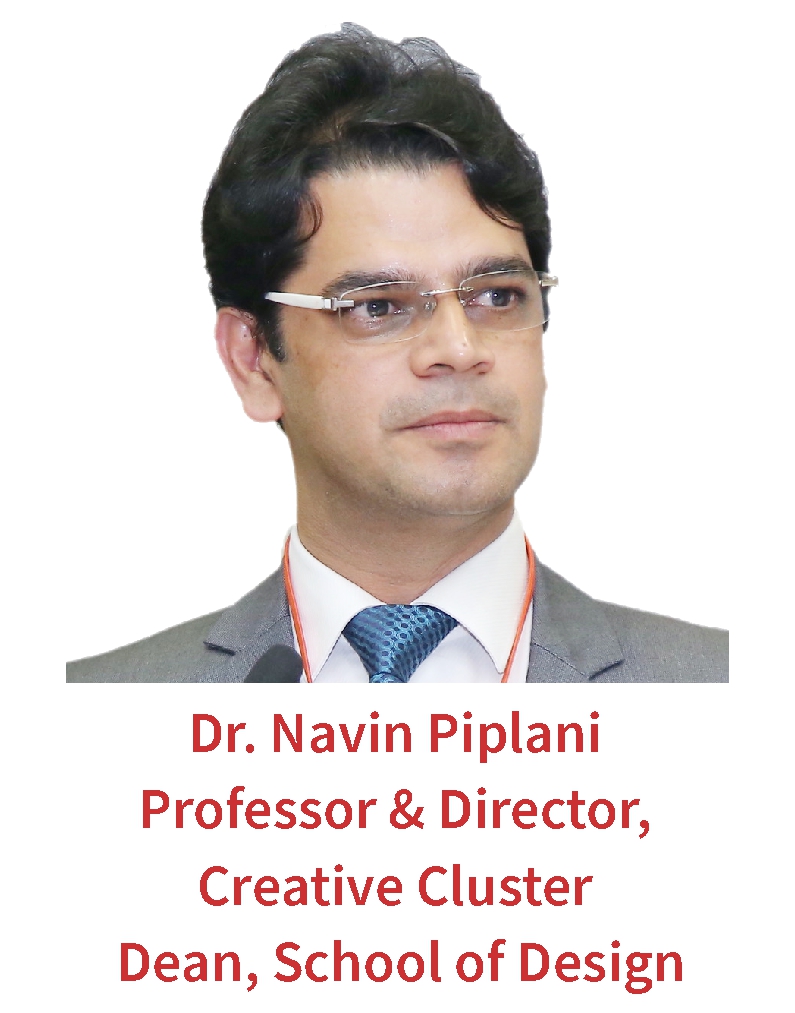Events Creative Cluster National Conclave - The Future of Architectural Education in India

The Creative Cluster at the Sushant University is envisioned to be an integration of the three creative schools:
The three creative schools are intrinsically linked elements of a single phenomenon – Design.
The integration will work at multiple levels – philosophical, practice and administrative.
The primary objective is to facilitate transdisciplinary, constructive and barrier-free exchange of knowledge, experience and skills.
The creative cluster space will be used for developing cross-cutting linkages amongst the three creative schools within the University framework. Whilst the functioning of the schools shall continue as three pillars of Higher Education at SU, there will be opportunities for identifying mutually inclusive and outwardly impactful areas for education, training, capacity building, research, and practice.
Some of the key benefits of a creative agglomeration are:
A critical basis to harness these benefits will be underpinned by a system of interactions and networking.
A significant outcome of a creative cluster is a phenomenon described by Nesta*:
‘Knowledge Spillovers’ – a process by which new thinking in one area helps to drive new thinking in other area(s).
*Nesta is the National Endowment for Science Technology and the Arts in the UK).
This implies that knowledge and learning spillovers may take place when new ideas and technologies developed by one school are applied in other schools within the cluster and even outside the cluster in a wider education sector and design industry.
Thus, the setting up of a creative cluster at the Sushant University has a potential to be an educational and cultural melting pot, with a huge potential for the sector, industry and profession.
The creative cluster will facilitate the creation of a critical mass of professionals with knowledge and skills – architects, designers and planners.
This will happen at many levels, by:
The School of Art and Architecture, the School of Design and the School of Planning and Development are the three pillars of the Creative Cluster.
The fundamental aspects that connect the three schools are creativity, innovation and engagement.
SAA - the school of art and architecture works on the principle of creative engagement for enhanced human experience.
SoD - the school of design works on the principle of creative innovation for enriched living environment.
SPD - the school of planning and development works on the principle of creative exploration for sustainable habitat systems.
The key role of the three schools in building socially relevant, culturally conscious, environmentally sustainable and economically progressive design domains is increasingly recognised and is a primary reason for their integration into a creative cluster.
The cluster will be more closely linked to the industry. The generation of new knowledge at the university will be available for application by the industry and profession for the benefit of the society.
In return, the industry, and society at large, will find ways to access this new knowledge through education, research and capacity building.
The schools – industry – society will work together towards strengthening the knowledge economy and the creative industry.
The key areas which are identified as the focus areas for the creative cluster are:
a. Value addition
The mandate and activities of the creative cluster are developed with a focus on ‘value addition’ to the academic, research and professional excellence of the schools.
b. Quality education
The primary objective of the cluster will be develop initiatives within the curriculum and integrating external elements with a view to enhancing the qualitative quotient of education at the schools.
c. Diverse community
A stimulating learning environment relies heavily on the quality of the community of faculty and students. It will be a priority to nurture the social, cultural, geographical and intellectual diversity in the schools.
It is essential to articulate a clear and impactful approach to the academic pedagogy and collective outreach of the three schools. The schools will work more closely across teaching and outreach frameworks, and strive to build a solid brand identity for the cluster whilst not undermining the legacy and strength of individual school.
Considering the current market trends and post-pandemic reclamation of sector domains, it is proposed to develop a multi-direction perspective on the education delivery at Sushant University.
360 DEGREE VIEW – considering multiple directions of view and looking beyond.
The intention is to consider the viewpoints already available to us in terms of a towering legacy and a rather challenging present, and shape a prospering future.
* Deepen our roots and widen the horizons
- indigenous ‘Indian’ approach
- international perspective and relevance
The academic content and pedagogy to embed the ‘Indianness’ or India specific elements, whilst not losing relevance for wider international context.
* Contextualise the possibilities and globalise the prospects
- focussed on career pathways in India
- aspirational for international students
The mission and outreach to identify the career options for graduates within India, whilst making an attractive educational destination for international students.
* Strengthen local systems and adapt international frameworks
- conform to regulatory standards and requirements in India
- consider education guidelines by international bodies
The teaching curriculum and delivery to adhere to the local regulatory frameworks, whilst considering higher education guidelines set by international professional bodies.
Branding Messages:
SAA “Creative engagement for enhanced human experience.”
SoD “Creative innovation for enriched living environment.”
SPD “Creative exploration for sustainable habitat systems.”
